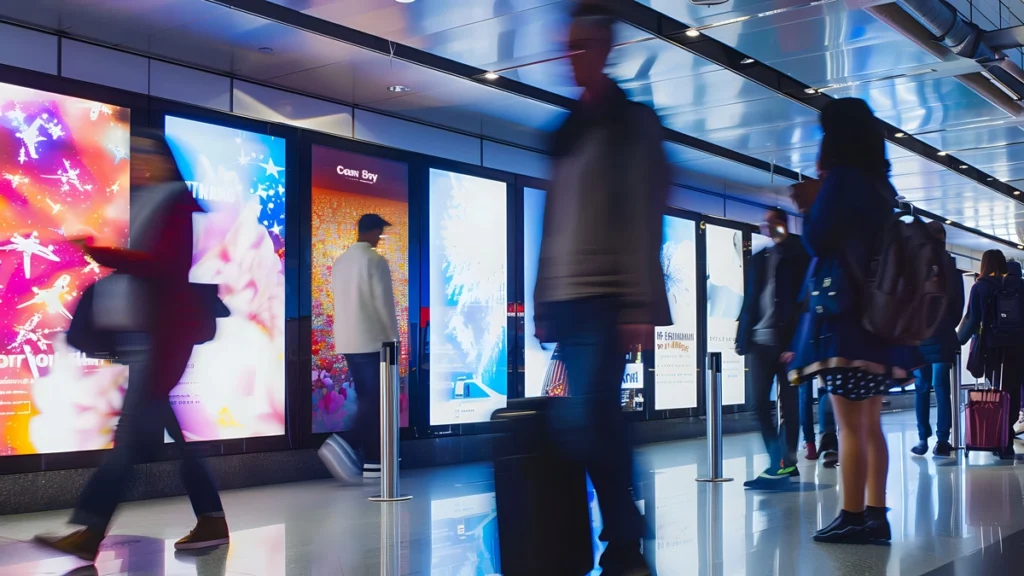As businesses compete to captivate and retain customers, digital signage is becoming a cornerstone of innovative marketing strategies. In 2025, advancements in technology—including AI, real-time content delivery, and interactive displays—are set to revolutionize how brands engage with their audiences. Here’s how digital signage is reshaping marketing strategies and the trends to watch for the year ahead.

1. Dynamic, Real-Time Content Delivery
Gone are the days of static advertising. Digital signage now allows marketers to deliver dynamic and adaptable content that reacts to real-time factors such as audience demographics, weather, or current events.
Key Features:
- Live Updates: Display time-sensitive promotions, breaking news, or social media feeds to keep messaging relevant.
- Programmatic Advertising: Automate ad placements based on audience data, ensuring targeted and timely delivery.
- Weather-Based Campaigns: Use local weather conditions to trigger specific advertisements, such as promoting hot drinks on cold days.
Why It Matters: Real-time content ensures that marketing messages are always timely, engaging, and aligned with customer expectations, enhancing brand relevance.
2. Personalized Customer Messaging
Personalization is becoming the gold standard in marketing, and digital signage is stepping up to the challenge with AI-powered capabilities that tailor messages to individual customers or specific audience segments.
How It Works:
- AI-Driven Analytics: Analyze customer data to deliver customized promotions or product recommendations.
- Facial Recognition: Identify customer demographics like age and gender to tailor content in real time.
- Location-Based Targeting: Leverage geofencing to display personalized offers as customers approach stores.
Why It Matters: Personalized messaging resonates more deeply with customers, increasing engagement, loyalty, and conversion rates.
3. Experiential Marketing with Interactive Displays
Experiential marketing, which emphasizes immersive customer experiences, is becoming increasingly popular. Interactive digital signage is at the heart of this trend, blending technology with storytelling to create memorable interactions.
Examples:
- Touchscreen Interfaces: Allow customers to explore product catalogs, view demos, or customize orders in real time.
- Augmented Reality (AR): Enable shoppers to visualize products in their homes or try on virtual outfits.
- Gamification: Create engaging experiences like quizzes or games that reward participants with discounts or prizes.
Why It Matters: Interactive displays not only attract attention but also encourage active participation, making the brand experience more memorable and enjoyable.
4. Integration into the Omnichannel Ecosystem
Digital signage is no longer an isolated tool—it’s an integral part of the omnichannel marketing strategy. These displays bridge the gap between physical and digital customer journeys, ensuring a seamless experience.
Applications:
- QR Codes and Mobile Integration: Enable customers to transition from in-store displays to online platforms seamlessly.
- E-Commerce Connectivity: Highlight online-exclusive deals or synchronize inventory updates with digital signage.
- Social Media Integration: Showcase user-generated content or live feeds from social media platforms to boost engagement.
Why It Matters: By connecting various touchpoints, digital signage helps create a cohesive and frictionless customer experience across channels.
5. AI-Powered Content Creation and Management
AI is simplifying content creation and management, allowing marketers to deploy impactful campaigns with minimal effort.
Innovations to Watch:
- Content Automation: AI tools create and schedule advertisements based on analytics and market trends.
- Real-Time Adjustments: Automatically modify content based on factors like inventory levels or audience feedback.
- Predictive Analytics: Anticipate customer needs and display relevant messaging before they even ask for it.
Why It Matters: AI-driven systems ensure that content is always optimized for effectiveness, reducing manual effort and maximizing impact.
Preparing for the Digital Signage Revolution
To fully leverage digital signage in 2025, businesses should:
- Invest in Scalable Solutions: Choose platforms that can grow with technological advancements.
- Prioritize Data Privacy: Ensure that customer data collected through AI and analytics is securely managed.
- Collaborate with Experts: Work with AV and marketing professionals to design impactful campaigns tailored to your audience.
Digital signage is not just a display—it’s a powerful marketing tool that drives engagement, fosters personalization, and bridges the gap between physical and digital channels. By embracing these trends, businesses can transform their marketing strategies and secure a competitive edge in 2025.



